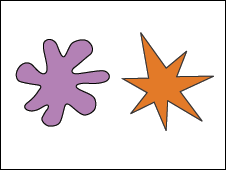Confident, charismatic and tough are some traits that you would expect to find in a successful leader. That is why it is widely believed that all leaders have similar personality types, meaning there is an archetypal personality for leaders. A good leader is thought of as someone who has such a strong personality that people just follow them because of their forceful ideologies and values. Those who have sufficient character are likely to triumph over whatever reality they confront.
A new picture of leadership has emerged however, which focuses on how a persons ability to lead is largely dependent on their understanding of their followers, not by how charismatic they can be. It explains that leadership is the ability to shape what followers want to do instead of enforcing compliance; leadership is dependent on constituent co-operation and support rather than punishment and fear. To gain any form of credibility amongst followers, leaders must try to position themselves among the group and never above it.
Recent literature identifies that a good leader does not have any fixed set of personality traits. Instead a leader is often a choice by the group being led, in fact leaders can even select the traits they want to project to followers to increase their standing amongst the group. A leader shares in the same identity as their followers, they are a representation of their group. The most influential presidents, captains and chief executives adopt the values and identity of the group then try to shape that identity for their own ends.
No accident that George. W. Bush, has often presented himself to Americans as a regular guy rather than the next in line from an elite East Coast Yale University dynasty!
From Charisma to Consensus
100 years ago, the dominant theory of leadership was that all leaders have the ideal personality. There was a romanticised view of leaders, with many people seeing them as heroes and saviours. However, post WW2, and following the rise of fascism and Nazism many turned against the notion that character alone determined the effectiveness of leaders. To believe that entire nations could be lead by one charismatic person into carrying out some of the Nazi atrocities was hard to stomach, so psychologists began to look for other explanations of leadership.
Scholars began to favour ‘contingency models’ which focus on the context which leaders operate, as opposed to the leader alone. Influential social psychologist Fred Fiedler suggested that the secret to good leadership lies in finding and settling in the ‘perfect match’. By this Fiedler meant that there is an ideal leader for every group, basically, every would be leader has an ideal leadership context. Strong leadership comes out of a symbiotic relationship between leaders and followers within a social group, it requires an intimate understanding of group psychology.
The study of how groups can restructure individual psychology provides the first clues into the secrets of effective leadership. Henri Tajfel and John. C. Turner’s research into social identity in the 1970s may provide some answers. Social identity refers to the part of a person’s self that is defined by a group. Turner pointed out, social identity allows people to identify and act together as group members. Social identities thus make group behaviour possible; enabling us to reach a consensus on what matters to us to co-ordinate our actions with others and to strive for shared goals.
This viewpoint does not appeal to leadership directly, but clarifies why leadership requires a common ‘us’ to represent a group. Leaders are at their most effective when they can induce followers to see themselves as a group member and to see the group’s interest as their own interest. An example of this comes from Bernard Bass from the American Binghamton University when he showed that leaders are best when they ensure that followers see the group’s identity as their personal identity, and therefore they can lead them to do certain things because it is in the best interest of everyone.
A prime of example of how it is integral for a leader to share similar identities as followers comes from the European monarchs. Before national identities emerged, many monarchs ruled by force, using power rather than understanding. Once people identified with nations, effective monarchs needed to rule as patriots who were able to lead the people because of a shared national identity. Monarchs such as Louis XVI of France misunderstood or ignored this transition and litterally lost their heads.
One of the Gang
When shared social identity exists, leaders can best represent the identity that will have the most influence over the group members. The best leaders are usually prototypical of the group that they are leading. George. W. Bush is a prime example in the way he connected with Middle America – intentionally or otherwise – when he littered his speeches with verbal gaffes, something that columnist Kevin Drum suggested in the Washington monthly worked in Bush’s favour during the 2004 election. Indeed, those who scoffed at Bush’s awkward utterances suffered, because their criticisms cast them as the alien elite, out of touch with most ordinary Americans.
Even the way Bush dressed helped him to appear as representative of the group’s he was leading. His leather jackets and cowboy clothes create an image of him as a regular guy. In the same vein the late Palestinian leader Yasser Arafat adopted the headscarf of the peasantry to identify with his people. Such examples counter the idea that leadership requires a particular set of personality traits, the only desired traits and actions necessary have to fit in with the culture of the group being led.
This may explain why young people have become so disinterested in politics in recent years. They may not relate to the politicians today, and therefore feel indifferent about voting any one group in.
If fitting in is important for gaining influence and control, then anything that sets leaders apart from the group can compromise their effectiveness. Acting superior or failing to treat followers respectfully or listen to them will undermine a leaders credibility. That is why paying CEOs disproportionately large wages often results in unrest within a company, because those who are being led find it hard to relate to those who are leading, because of the differences in salary.
Wielding words – The Skill of lincoln
“Four scores and seven years ago our fathers brought forth upon this continent a new nation, conceived in Liberty, and dedicated to the proposition that all men are created equal”
– Abraham Lincoln
Leadership is not just conforming to group norms! The best leaders define their groups social identity to fit with policies they plan to promote, enabling them to position those policies as expressions of what their constituents already believe. In Lincoln’s Gettysburg address, Abaraham Lincoln strongly emphasised the principle of equality to rally people around his key policy objectives: unification of the states and emancipation of the slaves
Lincoln elevated equality to a position of supreme importance and made it the touchstone of American identity. After Lincoln’s address, Americans interpreted the constitution in a new way. This reshaping of American identity as centred on equality allowed Lincoln to unite and mobilise Americans around freeing slaves.
No matter how skilled a person may be a leader’s effectiveness is highly dependent on two things: Do followers see their leaders as one of them? Do followers find their leader’s vision of identity compelling? Psychological analysis tells us that for leadership to function well, leaders and followers must be bound by a shared identity and by the quest to use that identity as a blueprint for action. The division of responsibility in leadership can vary. In more authoritarian cases, leaders can claim sole jurisdiction over identity and punish anyone who dissents. In more democratic cases leaders can engage the population in a dialogue over their shared identity and goals. Either way, the development of a shared social identity is the basis of influential and creative leadership. If you can control the definition of identity, you can change the world.
Musa Clarke



